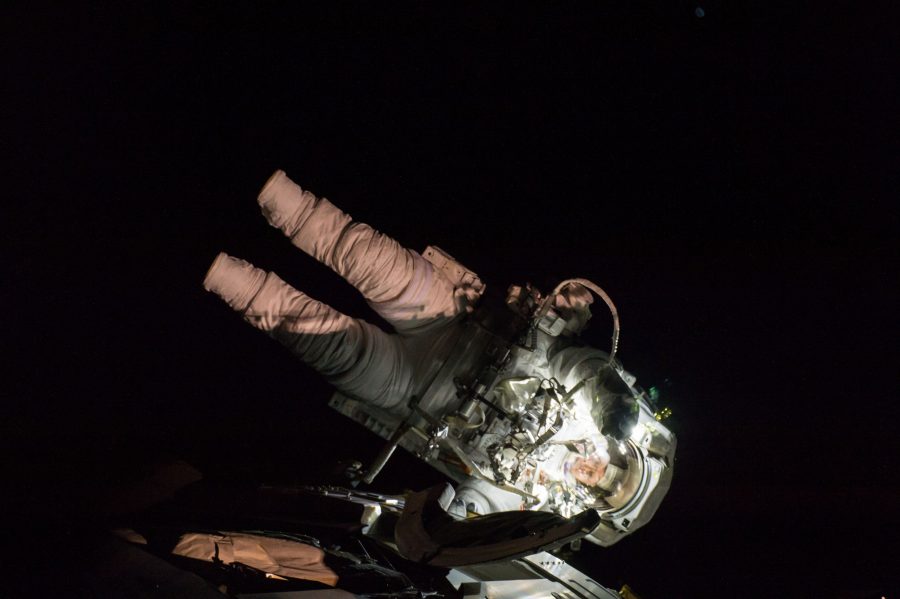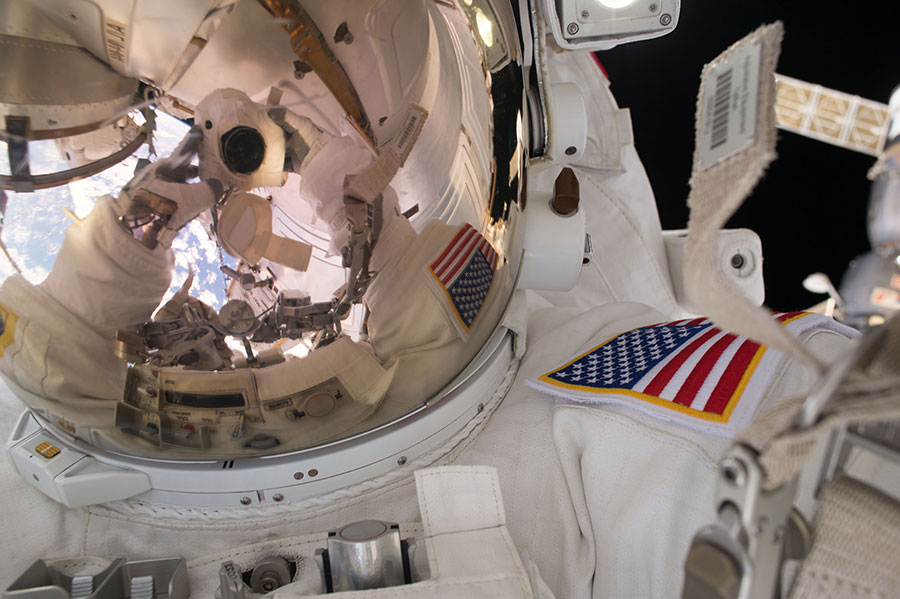Astronauts at the International Space Station completed the 200th spacewalk on May 12. NASA astronauts Peggy Whitson and Jack Fischer ventured outside the ISS to conduct the spacewalk, which had to be cut short by more than two hours when problems during preparation for the excursion arose.
Whitson, the commander of NASA’s Expedition 1, and Fischer, NASA flight engineer, exited the airlock over an hour later planned at 9:08 a.m. EDT (13:08 GMT). The late exit was due to the discovery of a small water leak in a cooling and servicing umbilical. The line was not part of the crew’s spacesuits, but ground teams still needed to discover the nature of the leak and they were asked to wait.

200th spacewalk lasted four hours
It was determined the Extravehicular Activity (EVA) could proceed with only one working umbilical but consumables like water, battery and air levels needed to be watched closely to preserve margins. Thus, the spacewalk which was originally scheduled to last 6.5 hours was reduced to just over four hours.

“Oh my gosh, this is beautiful,” said Fischer looking at the Earth, according to Spaceflight Insider. “The biggest slice of awesome pie I’ve ever seen.”
Whitson was the lead spacewalker and wore a suit with red stripes, and she was tasked to work on the S3 truss segment. There Whitson began working to replace an avionics box on Express Logistics Carrier (ELC) 4. The ExPrESS Pallet Control Assembly (ExPCA) -which is pronounced “ex-pecka,”- had never been replaced in space before. Fischer, who wore the suit with no stripes, assisted her by grabbing a foot restraint and attached it to the end of the robotic Canadarm 2 and then moved to the same area where Whitson was working on the ExPCA.
The ExPCA is one of the several units that provide power, command, and data distribution capabilities to the ELCs as well as orbital replacement units. That particular avionics unit was taken to the outpost recently aboard the S.S. John Glenn OA-7 Cygnus spacecraft.
Seeing as the replacement part was necessary for the spacewalk to begin, the excursion was delayed for more than a month to wait for the launch and arrival of the cargo craft. Whitson and Fischer worked quickly to replace the part once they were both at the site.
Peggy Whitson is now on the top five of astronauts with more spacewalk time
After replacing the part, Whitson and Fischer were left with two more tasks, which included repairing insulation on the Japanese robotic arm on the Kibo module, as well as the installation of a data collector on the Alpha Magnetic Spectrometer (AMS-2). AMS-2 is a particle physics experiment that has been attached to the ISS since 2011.
Each astronaut took a task: Whitson made her way to AMS-2 and Fischer went to Kibo to fix the robotic arm. Whitson had to install a telemetry path for engineers to investigate the performance of AMS-2’s cooling pumps, and she also tested a data port that had not been active since the experiment was installed.

AMS-2 was initially planned to be a short-term experiment, and it was scheduled to be flown back to Earth in the payload bay of a Space Shuttle after some years in orbit. However, after it was decided that the orbiters were going to be retired, engineers worked to transform the unit into a long-term experiment. The astronauts noted that the pumps are showing signs of degradation and will eventually need to be changed, most likely over several spacewalks.
While Whitson worked on AMS-2, Fischer repaired the insulation on the Japanese robotic arm on the Kibo module. Fischer finished his task and rejoined Whitson, and between the two of them, they installed a debris shield around the base of Pressurized Mating Adapter 3, which recently was relocated to allow for future commercial spacecraft to dock with it.
PMA-3 still needs an International Docking Adapter to be launched and attached before it is ready to support the Commercial Crew Program. IDA-3 is expected to start next year inside a SpaceX Dragon capsule, and once it is installed, it will be a backup port to the one installed in the summer of 2016.
The spacewalk lasted around four hours, as managers decided to cancel several tasks that included taking pictures of AMS-2 and the SAGE-III, which was recently installed. Astronauts cleaned up their work and headed back to the airlock. The spacewalk officially ended at 1:21 p.m EDT (17:21 GMT) and lasted four hours and 13 minutes.
Whitson has added hours to her spacewalk time and totals 57 hours and 35 minutes, going fifth place behind former astronaut John Grunsfeld’s 58 hours, 35 minutes. Whitson was just under an hour short of making it into te top three astronauts with more spacewalk time.
Source: Spaceflight Insider
